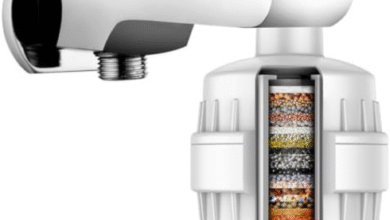The Impact of Innovative Design on Product Differentiation

In today’s competitive market, standing out isn’t just a goal—it’s a necessity. I’ve seen firsthand how innovative design can transform a product from just another item on the shelf to a must-have. It’s not just about aesthetics; it’s about creating an experience that resonates with consumers and sets a brand apart.
When a product features a unique design, like custom chef knives, it captures attention and sparks interest. This differentiation can be the key to driving consumer preference and loyalty. By leveraging cutting-edge design principles, companies can craft products that don’t just meet needs but also create emotional connections.
Let’s explore how innovative design shapes product differentiation and why it’s a game-changer in the marketplace.
The Importance of Product Differentiation
Product differentiation is essential in a crowded marketplace. Unique characteristics set products apart from competitors, ensuring they capture consumer attention. Companies leverage design, features, and quality to distinguish their offerings.
Innovative design plays a critical role. A visually appealing and functional product attracts buyers. I’ve noticed that when brands focus on aesthetics and usability, their products often gain a competitive edge.
Distinct features make a difference. Consumers look for specialized functions that meet their specific needs. By integrating unique capabilities, products can address gaps left by competitors.
Quality also matters. High-quality materials and craftsmanship establish trust. When a product looks and feels premium, it often commands higher price points and customer loyalty.
Strategic branding enhances differentiation. A strong brand narrative resonates with consumers, adding value. I’ve seen that consistent messaging, aligned with innovative design, creates a cohesive and compelling product image.
Balancing these elements drives success. Combining innovative design with unique features and quality materials ensures products stand out. These strategies collectively contribute to effective product differentiation in the market.
Understanding Innovative Design
Innovative design can transform ordinary products into extraordinary experiences. By focusing on creativity and functionality, companies can achieve unique market positions.
Defining Innovative Design
Innovative design integrates new ideas and cutting-edge technology to create products that stand out. It’s not just about aesthetics but also usability, sustainability, and performance. Examples include Apple’s sleek gadgets, Tesla’s electric cars, and Nike’s advanced footwear material.
- Creativity: Employ unique concepts to capture attention. Companies like Dyson use creativity to differentiate their vacuum cleaners.
- Functionality: Ensure practical use without sacrificing style. Ikea products exemplify functionality combined with modern design.
- Sustainability: Adopt eco-friendly materials. Brands like Patagonia focus on sustainable clothing.
- User-Centric: Prioritize user experience. Amazon’s Kindle provides a seamless reading experience.
- Technology Integration: Utilize the latest tech for improved features. Smart home devices like Nest exemplify this characteristic.
The Role of Innovative Design in Product Differentiation
Innovative design significantly impacts product differentiation by creating unique attributes that set products apart. This element not only enhances brand identity but also increases customer loyalty and offers a competitive advantage.
Enhancing Brand Identity
Innovative design reinforces brand identity by establishing a consistent and recognizable aesthetic. Apple, for instance, uses sleek minimalism in its products, which has become a hallmark of its brand. Companies create a distinct visual language that resonates with consumers by integrating unique design elements and materials. This, in turn, ensures that the brand remains memorable and stands out in a crowded marketplace.
Increasing Customer Loyalty
Innovative design also contributes to greater customer loyalty. Consumers are more likely to remain loyal to brands that consistently deliver visually appealing and functional products. Nike’s approach of blending cutting-edge design with athletic performance serves as an example. Customers form a lasting emotional connection to brands when their designs align with user needs and preferences. This increases repeat purchases and brand advocacy, both critical for sustained business success.
Competitive Advantage
Innovative design provides a competitive advantage by distinguishing products in a saturated market. Companies like Dyson leverage design innovation to introduce groundbreaking products that redefine categories. Unique features, such as a bladeless fan or a dual cyclone vacuum, create differentiation from competitors. When brands innovate in design, they capture market attention and adapt more readily to changing consumer preferences, keeping them ahead in the industry.
Case Studies of Successful Product Differentiation
Examining successful product differentiation showcases how innovative design enhances brand identity and competitive advantage.
Apple Inc.
Apple Inc. epitomizes product differentiation through innovative design. The iPhone, launched in 2007, revolutionized the smartphone industry. Apple’s use of high-quality materials, sleek design, and intuitive user interface set the iPhone apart from competitors. The integration of hardware and software creates a seamless user experience, contributing to Apple’s loyal customer base.
For example, the iPhone X introduced Face ID, a biometric authentication system not seen in earlier models. This unique feature not only improved security but also underscored Apple’s commitment to cutting-edge technology. Apple’s consistent design innovation cements its position as a market leader.
Tesla Motors
Tesla Motors leverages innovative design to differentiate its electric vehicles. The Model S, introduced in 2012, disrupted the automotive market with its high performance and sustainability features. Tesla’s design incorporates advanced battery technology, an extensive range, and over-the-air software updates, setting it apart from traditional cars.
For instance, the Model 3’s minimalist interior design, featuring a single touchscreen interface, provides a futuristic driving experience. This distinct feature highlights Tesla’s focus on simplicity and functionality. By consistently pushing design boundaries, Tesla maintains a competitive edge in the electric vehicle market.
Challenges in Implementing Innovative Design
Integrating innovative design into product development presents several challenges. This section addresses key obstacles like cost considerations and market acceptance.
Cost Considerations
Implementing innovative design often involves significant costs. Companies face high expenses in research and development (R&D) to create unique and functional designs. For example, acquiring cutting-edge technology and materials, hiring skilled designers, and conducting extensive testing increase financial burdens. Additionally, small businesses struggle to compete with larger corporations that have more resources to invest in innovative design. Despite potential long-term benefits, the initial financial investment can be prohibitive for many companies.
Market Acceptance
Gaining market acceptance poses another challenge for innovative design. Consumers may be hesitant to adopt new products or technologies, particularly if they deviate significantly from established norms. Innovative designs often require changes in consumer behavior or learning new usage methods, which can slow adoption rates. For instance, early adopters might embrace novel features, but mainstream customers may take longer to adjust. Companies must invest in effective marketing strategies to educate and convince potential buyers of the benefits, ensuring the innovative design resonates with target audiences.
Future Trends in Innovative Design
Innovative design continuously evolves, reflecting advancements in technology and consumer demands.
1. Sustainability and Eco-Friendly Materials
Designers increasingly focus on sustainability. Using biodegradable, recyclable, or renewable materials is becoming a norm. Examples include Adidas’ sneakers made from ocean plastics.
2. Integration of AI and Machine Learning
Artificial intelligence (AI) and machine learning enhance design processes. AI aids in automating tasks, optimizing user experiences, and predicting design trends. Companies like Google use AI for smarter user interfaces.
3. Personalization and Customization
Consumers crave personalized products. Innovative design leverages data analytics to create customized experiences. Nike’s customizable shoes exemplify this trend.
4. Augmented Reality (AR) and Virtual Reality (VR)
AR and VR transform product design by providing immersive experiences. They enable virtual prototyping and interactive consumer engagement. IKEA’s AR app lets customers visualize furniture in their homes.
5. Minimalism and Functionality
Minimalist design trends highlight simplicity and functionality. Products focus on essential features, reducing clutter. Apple’s product designs often reflect this minimalist approach.
6. Smart and Connected Products
IoT (Internet of Things) influences product design, creating smart, interconnected devices. Smart home products like Amazon Echo showcase this integration.
Smart and connected products, along with sustainability and AI, shape the future of innovative design. These trends ensure products not only meet customer needs but also advance in functionality, personalization, and eco-friendliness.




